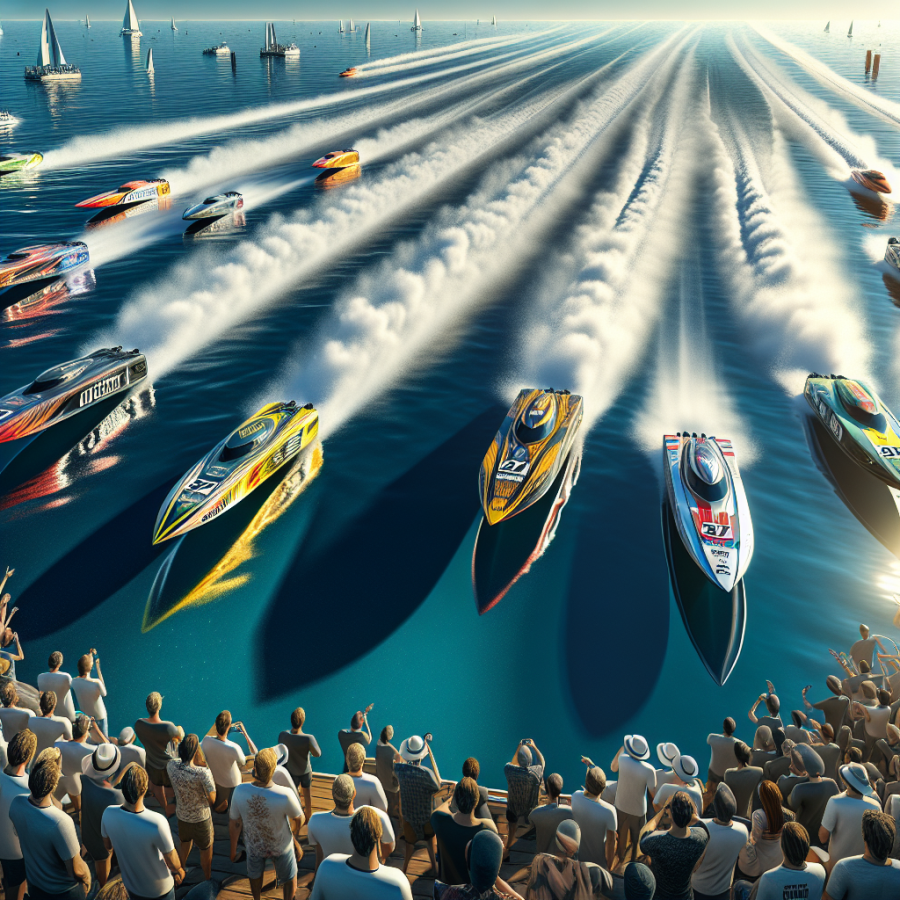Navigating the Turbulence: The Skill and Strategy Behind Motorboat Racing
Navigating the rough waters of competitive motorboat racing demands a unique combination of skill, precision, and strategic acumen. Racers must constantly assess their environment and adjust their techniques to harness the full potential of their vessels. This dynamic sport requires more than just the ability to push the throttle; it's about making split-second decisions that can be the difference between victory and defeat.
One of the critical skills for motorboat racers is the art of reading water conditions. Understanding how to interpret the water's surface texture, current, and wave patterns can provide a significant advantage. Racers use this knowledge to adjust their speed and steering, ensuring they maintain control while maneuvering through the racecourse at high speeds. The ability to anticipate and react to sudden water changes can help maintain an optimal racing line, reduce drag, and prevent mishaps.
Another vital aspect of successful motorboat racing is mastering the boat's handling dynamics. Each type of boat has its characteristics, and knowing how to exploit its strengths while mitigating weaknesses is crucial. This includes understanding the weight distribution, throttle response, and turn radius, which are all essential to optimizing performance. Experienced racers develop an almost intuitive sense for their boat's behavior, allowing them to push the limits while maintaining safety.
Strategic positioning also plays a significant role in the outcome of motorboat races. Competitors need to be aware of their rivals' locations and adjust their tactics accordingly. For instance, taking the inside lane on turns can reduce the distance traveled and offer a tactical edge, but only if it's done without compromising speed or control. Similarly, racers must decide when to engage in overtaking maneuvers, weighing the potential risks against the rewards.
In addition to in-race tactics, successful motorboat racing also involves extensive preparation. Teams spend countless hours fine-tuning engines, props, and hull designs to enhance performance and reliability. This attention to detail ensures the boat can withstand the race's rigors and remain competitive throughout the season. Adjustments made based on previous races, weather forecasts, and water conditions can dramatically improve chances of success.
Moreover, communication and teamwork are essential ingredients of motorboat racing. While the racer is at the helm, there is often a team behind the scenes working on strategy, navigation, and technical support. Crew members monitor the boat's systems, providing the racer with vital information about engine performance, fuel levels, and potential mechanical issues.
Read also:
Understanding the Financial Aspects: How Much do Soccer Coaches Make?"
The Adrenaline Rush of High-Speed Motorboat Competitions
As the roar of the engines fills the air and the spray of saltwater hits the face, nothing quite compares to the high-octane environment of high-speed motorboat competitions. This adrenaline-fueled world attracts both drivers and spectators who crave the thrill of speed on the waves. Let's dive into what makes these events the pinnacle of nautical excitement.
The essence of motorboat racing lies in its ability to challenge the skill and bravery of the racers. Pilots of these high-speed crafts need to have an acute understanding of marine dynamics, as well as the physical capability to handle the intense forces exerted during a race. The boats often reach speeds that are unthinkable to the average boater, sometimes surpassing 100 miles per hour. At such high speeds, reaction times must be incredibly swift, and the margin for error is razor-thin.
Each competition comes with its unique set of obstacles. Courses are often designed with tight turns, requiring meticulous precision from racers. They must navigate through treacherous waters while maintaining control and speed, all while competing against equally skilled opponents. The sight of these sleek vessels darting through the water, turning on a dime and accelerating at breakneck speeds, is a spectacle that is as awe-inspiring as it is exhilarating.
Technology, too, plays a pivotal role in these competitions. Boats are designed with state-of-the-art materials and engineering that help reduce drag, enhance speed, and improve handling. Hydrodynamic hulls slice through the water while powerful engines roar behind, propelling these mighty machines forward. The design is a careful balance of power, aerodynamics, and weight, and the slightest modification can mean the difference between first and second place.
The thrill for participants goes beyond just the speed; it's about the competition. High-speed motorboat racers are a close-knit community who often share a passion for pushing the boundaries of what's possible on the water. The camaraderie among competitors is palpable, even as they vie for the top position. Yet, when they are on the water, it's an all-out battle where skill, courage, and strategy play out in a dance of speed and ocean waves.
For spectators, these races are a sensory feast. The sight of the sleek and colorful boats, the sound of their engines thundering, the smell of fuel and sea air, and the feel of the ocean mist combine to create an unforgettable experience.




